In the remote highlands of Vietnam, where mountain mists cling to limestone karsts and the H’mong people preserve centuries-old traditions, an extraordinary culinary practice has evolved. Au tau porridge in Ha Giang represents the fascinating intersection of danger and healing, tradition and survival. This humble dish, served steaming hot in the cool mountain evenings, transforms a deadly tuber into a medicinal delicacy through ancient knowledge passed down through generations. Join Phieu Travel as we explore the remarkable story behind this unique specialty that embodies the resilience, wisdom, and cultural heritage of Vietnam’s northern frontier.
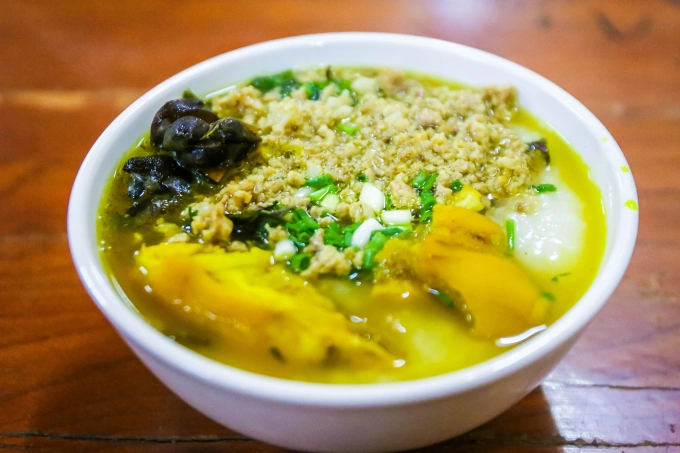
1. What is Au Tau Porridge?
Au tau porridge is a traditional H’mong specialty from Ha Giang province, created from a potentially lethal mountain tuber that’s been carefully detoxified and transformed into a healing delicacy. The dish consists of a rich rice porridge infused with meticulously prepared au tau root, typically enhanced with tender pork, aromatic herbs, and sometimes local mountain vegetables. Unlike typical Vietnamese rice porridges that are eaten throughout the day, au tau porridge is predominantly served in the evening hours when the temperature drops in the northern highlands.
The star ingredient, au tau (scientific name Aconitum carmichaelii), is a tuberous plant belonging to the Ranunculaceae family that grows wild in the mountainous regions of northern Vietnam. In its raw state, this tuber contains highly toxic alkaloids that can cause severe neurological symptoms and even death if improperly handled. Yet through generations of traditional knowledge, the H’mong people developed specific preparation methods that neutralize these toxins while preserving the root’s believed medicinal properties.
What makes this dish particularly intriguing is the fine line between poison and medicine, a distinction mastered through centuries of cultural wisdom. The resulting porridge is known for its slightly bitter, earthy flavor with nutty undertones a taste that might seem unusual to first-time visitors but becomes increasingly appreciated with each spoonful. This unique culinary creation represents not just a meal but a living testament to the H’mong people’s profound understanding of their natural environment and their ability to harness even dangerous elements for sustenance and healing.
2. Origins and Cultural Significance
The origins of au tau porridge are deeply rooted in H’mong traditional medicine and their historical relationship with the challenging mountain environment of Ha Giang. For centuries, the H’mong people have lived in these remote highlands, developing intimate knowledge of local flora, including which plants could heal and which could harm. Au tau roots were first utilized in traditional medicine practices long before becoming a culinary specialty, primarily used to treat joint pain, improve circulation, and provide warmth during the cold mountain winters.
The transition from pure medicine to medicinal food happened through necessity and innovation. Living in isolated mountain communities with limited resources, the H’mong people learned to maximize every available ingredient, including those requiring special handling. The practice of preparing au tau as a porridge allowed them to create a filling, warming meal that simultaneously delivered the root’s perceived health benefits. This dual-purpose approach to food as both sustenance and medicine remains a cornerstone of H’mong culinary philosophy.
The night-eating tradition associated with au tau porridge connects to both practical and cultural beliefs. Practically, the warming properties of the porridge make it ideal for cold highland evenings, while culturally, many H’mong people believe the medicinal effects are enhanced when consumed before sleep. Elders in Ha Giang often recommend au tau porridge for better sleep quality, increased energy the following day, and long-term joint health. This nighttime ritual has become a social tradition as well, with families and now travelers gathering around steaming bowls of porridge as evening conversations flow under starlit mountain skies.
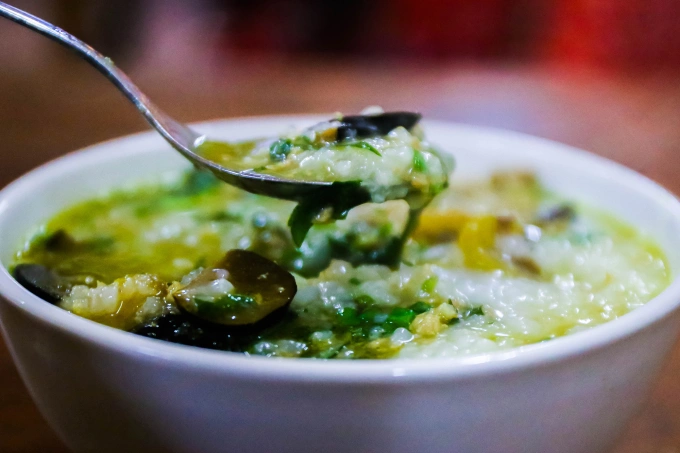
3. The Unique Au Tau Tuber – From Poison to Healing
The au tau tuber presents a fascinating paradox in the natural world a plant containing deadly toxins that, when properly processed, transforms into a healing food. In appearance, fresh au tau roots resemble small, knobby potatoes with a brownish exterior and white flesh that quickly oxidizes when cut. These unassuming roots contain aconitine and related alkaloids, potent neurotoxins that can cause numbness, cardiovascular issues, and respiratory failure if ingested raw or improperly prepared.
Traditional knowledge surrounding au tau’s detoxification has been refined over generations, resulting in a meticulous preparation process that makes the tuber safe for consumption. The standard method begins with careful peeling to remove the most toxic outer layer, followed by thorough washing and extended soaking in water that’s regularly changed often for at least 24 hours. The soaked roots are then boiled multiple times in fresh water, with each boiling further reducing toxicity levels. This labor-intensive process requires patience and precision, showcasing the depth of traditional food safety knowledge in H’mong culture.
The transformation from poison to medicine reflects a broader philosophical approach to natural elements in many traditional Asian medical systems. Rather than categorizing ingredients as simply “good” or “bad,” H’mong healing traditions recognize that powerful substances often contain both harmful and beneficial properties that can be separated through proper knowledge and technique. Modern scientific research has begun validating some traditional claims about processed aconitum plants, identifying compounds with anti-inflammatory and analgesic properties that remain after detoxification. This scientific validation adds another dimension to the cultural wisdom that has preserved au tau preparation techniques across centuries, demonstrating how traditional knowledge often anticipates scientific discoveries.
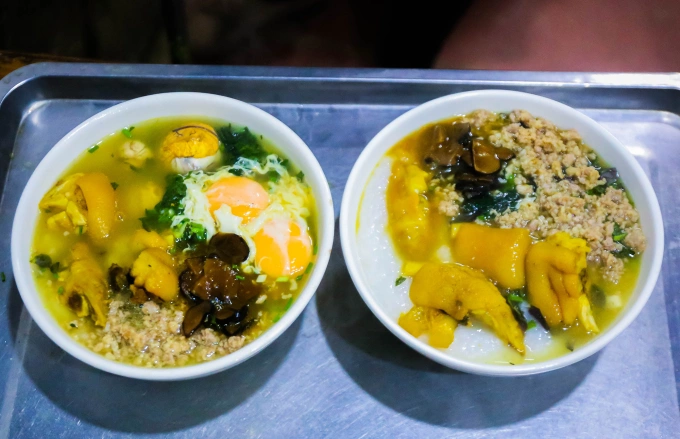
4. Step-by-Step: How Au Tau Porridge is Made
The preparation of authentic au tau porridge begins with the crucial detoxification of the tubers, a process that cannot be rushed or modified without risking safety. Local H’mong cooks start by carefully selecting mature au tau roots, identifiable by their firm texture and characteristic aroma. Each root is meticulously peeled using a sharp knife, removing all traces of the outer skin where toxin concentration is highest. The peeled roots are then thoroughly washed in cold water before being cut into thin slices to increase surface area for toxin removal.
Next comes the extended soaking phase, where the sliced roots are immersed in cold water for 24-48 hours, with the water changed every few hours. Following the soak, the au tau undergoes multiple boiling sessions typically three separate boils in fresh water, each lasting about 30 minutes. After each boiling, the water is discarded, and the process begins again with clean water. Only after completing this entire detoxification sequence are the au tau pieces considered safe to incorporate into the porridge.
The porridge itself starts with high-quality glutinous rice, washed and soaked for an hour before cooking. In a large pot, the rice is combined with pork bones that have been simmering separately to create a rich, flavorful broth. The prepared au tau slices are added along with thin strips of pork (typically from the belly or shoulder), ginger, and occasionally star anise. This mixture simmers slowly for at least an hour until the rice breaks down completely, creating a thick, creamy consistency. Final seasonings, including salt, white pepper, and sometimes a touch of fish sauce, are adjusted according to taste before serving. Fresh herbs and fried shallots are often added as garnish, providing aromatic contrast to the earthy flavors of the porridge.
Essential Ingredients for Traditional Au Tau Porridge
- 100-150g of properly detoxified au tau root slices.
- 1 cup of glutinous rice, thoroughly washed.
- 500g of pork bones for the broth base.
- 200g of thinly sliced pork belly or shoulder.
- Fresh ginger, julienned (about 2-3 tablespoons).
- Salt and white pepper to taste.
- Optional aromatics: star anise, spring onions, cilantro.
- Garnishes: fried shallots, fresh herbs, and sometimes a drizzle of sesame oil.
Safety Precautions for Handling Au Tau
- Never attempt to prepare au tau without proper knowledge of the detoxification process.
- Use gloves when handling raw, unprocessed au tau roots.
- Maintain separate cutting boards and utensils for the initial preparation stages.
- Discard all water used in the soaking and initial boiling processes.
- When in doubt, rely on local expertise or purchase from established vendors who specialize in safe au tau preparation.
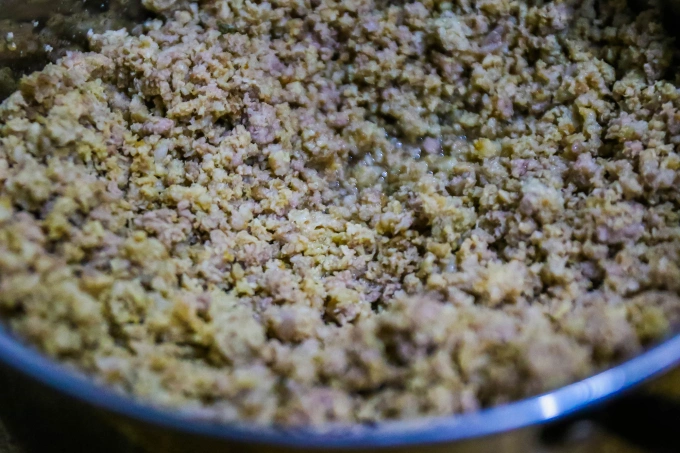
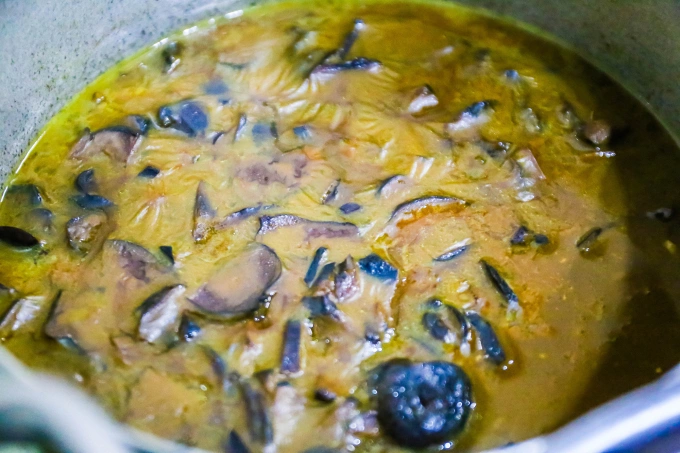
5. Tasting Experience: Flavor, Texture, and Serving Traditions
The first encounter with au tau porridge often surprises foreign palates with its distinctive flavor profile that balances bitter, earthy notes with savory richness. The au tau root itself contributes a mild bitterness reminiscent of certain medicinal herbs, but this is skillfully tempered by the sweet pork broth and creamy rice base. Many first-time tasters compare the experience to certain bitter vegetables or roots used in traditional medicine, though the overall effect is generally more subtle and balanced than expected.
Texturally, authentic au tau porridge achieves a silky consistency similar to traditional congee but typically slightly thicker. The glutinous rice breaks down completely during the long simmer, creating a velvety base. The au tau root maintains a tender but slightly firm texture, providing gentle resistance against the creamy porridge. Pieces of pork contribute richness and satisfying meatiness, while garnishes add contrasting textures: crispy fried shallots, crunchy fresh herbs, and sometimes crushed peanuts create a multi-dimensional experience in each spoonful.
Serving traditions for au tau porridge reflect both practical and cultural considerations. The dish is traditionally served piping hot in ceramic bowls, often accompanied by small dishes of additional condiments for personal customization. In Ha Giang, most locals enjoy their porridge after nightfall, typically between 7:00 and 10:00 PM, when temperatures drop in the highlands. The social aspect of au tau porridge consumption is noteworthy—families and friends gather around steaming bowls, often sitting on low stools at simple wooden tables or on home terraces. This communal dining experience transforms the medicinal porridge into a vehicle for connection and conversation, embodying the H’mong approach to food as both nourishment for the body and the community.
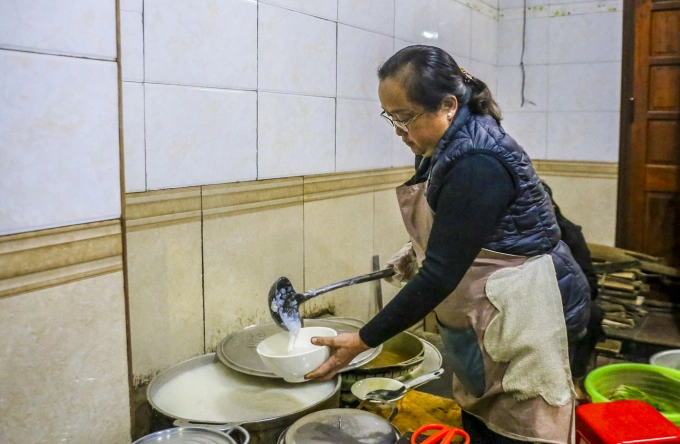
6. Where and When to Try Au Tau Porridge in Ha Giang
For travelers exploring the magnificent Ha Giang Loop with Phieu Travel, several authentic establishments offer properly prepared au tau porridge. In Ha Giang City, small family-run eateries around Nguyen Trai Street serve this specialty, with locals particularly recommending Cháo Ấu Tẩu Cô Tiên and Quán Cháo Ấu Tẩu Bà Hà. These modest venues may lack fancy décor but compensate with generations of expertise in safely preparing this unique dish. The porridge here is typically served from late afternoon until around 10 PM, perfect for dinner after a day of mountain exploration.
Venturing deeper into the loop, the town of Dong Van offers additional opportunities to sample au tau porridge, especially in its central market area. Here, small food stalls run by H’mong women serve traditional versions of the dish, often with slight variations in garnishes or accompaniments that reflect family recipes passed down through generations. For the most authentic experience, Phieu Travel guides recommend visiting between October and March, when cooler temperatures enhance appreciation for this warming dish and ensure fresh seasonal ingredients.
When planning your au tau porridge experience, timing matters both seasonally and daily. The dish is available year-round but particularly appropriate during the cooler months from October through March when Ha Giang’s mountain temperatures can drop significantly at night. Most establishments start serving in the late afternoon (around 4:00 PM) and continue until supplies run out, typically around 10:00 PM. Local food culture considers au tau porridge primarily an evening meal, aligning with traditional beliefs about its sleep-promoting properties. First-time visitors should consider trying this specialty with guidance from knowledgeable locals or tour guides like those at Phieu Travel, who can ensure you experience properly prepared versions and understand the cultural context that makes this simple dish extraordinarily special.
7. FAQ – Health Benefits, Safety, and Common Questions
Answers to common questions about taste, safety, and health benefits of this traditional H’mong porridge.
What does au tau porridge taste like?
Au tau porridge has a distinctive flavor profile that combines mild bitterness with rich, savory notes. The au tau root contributes an earthy, slightly medicinal taste that’s balanced by the sweet pork broth and creamy rice base. First-time tasters often describe it as having a pleasant bitterness similar to certain dark leafy greens, with nutty undertones and a complex, warming character. The flavor is complemented by aromatic ginger, subtle seasonings, and fresh herbs that brighten each spoonful.
Is au tau porridge safe to eat?
When properly prepared by experienced cooks following traditional detoxification methods, au tau porridge is safe for consumption. The extensive preparation process including careful peeling, extended soaking, and multiple boiling sessions effectively neutralizes the natural toxins present in raw au tau. Safety concerns arise primarily when these crucial preparation steps are shortened or improperly executed. For this reason, Phieu Travel recommends trying au tau porridge only at established restaurants with proven expertise or under the guidance of knowledgeable locals familiar with proper preparation techniques.
Can you make au tau porridge at home?
Making authentic au tau porridge at home is not recommended unless you have specific training in the proper detoxification techniques. The critical safety processes require precise knowledge that typically comes from generations of passed-down expertise. Additionally, identifying authentic au tau roots and distinguishing them from similar-looking but potentially more toxic wild tubers requires botanical knowledge specific to the region. For travelers interested in the preparation process, some local families in Ha Giang offer cooking demonstrations as part of homestay experiences, providing a safe way to learn about this traditional dish under expert supervision.
What are the health benefits?
According to traditional H’mong medicine, properly prepared au tau porridge offers several health benefits, including improved sleep quality, relief from joint pain, enhanced circulation, and increased energy. The warm nature of the dish is believed to help balance the body during cold weather, while the medicinal properties of processed au tau are thought to strengthen bones and reduce inflammation. Modern research has begun investigating some of these claims, with preliminary studies suggesting certain compounds in properly processed aconite plants may indeed have anti-inflammatory properties. However, it’s important to note that these traditional benefits come from cultural knowledge rather than comprehensive clinical studies.
Are there vegetarian or vegan options?
Traditional au tau porridge almost always contains pork, both in the broth base and as meat pieces in the final dish. However, as interest from international travelers has grown, a few establishments in Ha Giang City have begun offering modified versions that substitute mushroom broth for pork stock and use tofu or additional vegetables instead of meat. These adaptations maintain the distinctive au tau flavor while accommodating dietary preferences. When seeking vegetarian versions, it’s advisable to make specific inquiries about preparation methods, as some places may still use animal-based ingredients in the cooking process. Phieu Travel can help arrange special requests for travelers with specific dietary requirements when visiting traditional eating establishments in Ha Giang.
8. Experience Au Tau Porridge on Your Ha Giang Journey
Incorporating au tau porridge into your Ha Giang exploration creates a more immersive cultural experience that goes beyond sightseeing. This unique dish represents the perfect intersection of culinary adventure, cultural heritage, and traditional medicine that makes northern Vietnam so fascinating. When planning your journey through the magnificent Ha Giang Loop, Phieu Travel can arrange authentic dining experiences with local families or at trusted establishments known for their properly prepared au tau porridge, ensuring both safety and authenticity.
The experience of savoring this warming medicinal porridge after a day of navigating winding mountain roads creates lasting memories that connect travelers to the essence of Ha Giang. As you sit with steaming bowl in hand, perhaps in a simple roadside eatery with misty mountains visible through open doorways, you’ll gain insights into the H’mong relationship with their environment that no museum or guidebook could fully convey. The careful transformation of a potentially deadly root into nourishing food serves as a powerful metaphor for human ingenuity and the depth of traditional knowledge preserved in these highland communities.
For travelers seeking the most authentic experience, Phieu Travel recommends combining your au tau porridge tasting with a homestay in a traditional H’mong village. This arrangement often includes the opportunity to observe the preparation process firsthand while learning about the cultural significance directly from community members. From selecting the finest ingredients at local markets to understanding the proper serving customs, these immersive experiences transform a simple meal into a cultural education. Whether you’re a culinary adventurer, a cultural enthusiast, or simply a curious traveler seeking genuine connections, including au tau porridge in your Ha Giang itinerary adds a richly meaningful dimension to your northern Vietnam journey with Phieutravel.com.
Read more:
- Best Ha Giang Loop Travel Insurance Guide 2025
- Explore Lao Xa Village: Hmong Life on Dong Van Plateau
- Ha Giang Loop in January: Complete Weather, Travel & Packing Guide for 2025

You Might Also Like
Ha Giang Weather in September: Complete Guide for Travelers
Exploring the magnificent Ha Giang Loop in September offers travelers a perfect balance of favorable[...]
Quan Ba Twin Mountains: Ha Giang’s Iconic Fairy Hills and Complete Travel Guide
The mystical Quan Ba Twin Mountains rise from the emerald valleys of Ha Giang like[...]
Vuong family mansion: the architectural marvel and cultural legacy of Ha Giang
Deep in Vietnam’s northern highlands, where mist-shrouded mountains meet terraced rice fields, stands a testament[...]
Ha Giang Loop Safety Tips: How to Ride Securely in Vietnam’s Northern Mountains
The Ha Giang Loop, with its winding mountain roads and breathtaking landscapes, offers one of[...]
The Ultimate Guide to the M-Shaped Curve on Ha Giang Loop
Vietnam’s remote northern province of Ha Giang hides a natural wonder that has captivated adventurous[...]
Most Beautiful Places to Visit in Vietnam: Essential Destinations and Insider Tips
Vietnam captivates travelers with its stunning landscapes, rich cultural heritage, and warm hospitality. From mist-shrouded[...]
Beyond the Beaten Path: Discovering Ha Giang Province in Northeast Vietnam
Ha Giang Province in Northeast Vietnam stands as one of the country’s last frontiers for[...]
Rainy season in Ha Giang: what to expect, when to go, and travel tips
Vietnam’s northern frontier reveals a different face during the rainy season, transforming Ha Giang’s limestone[...]